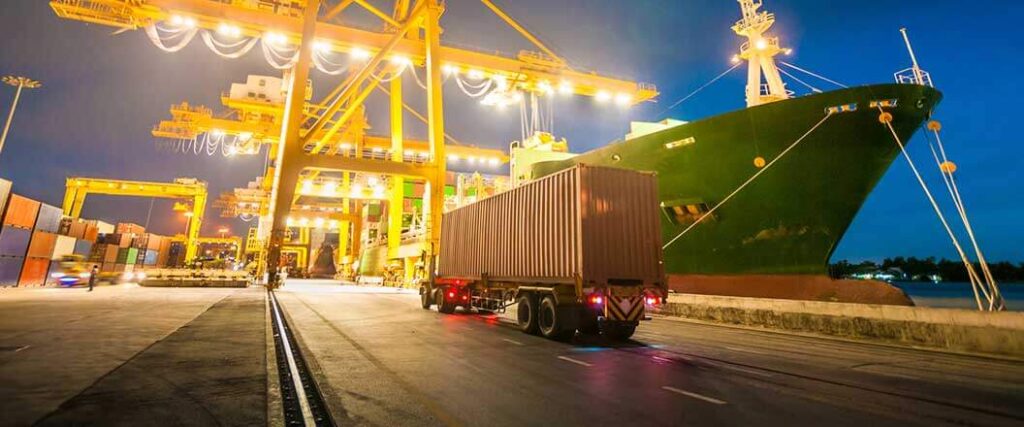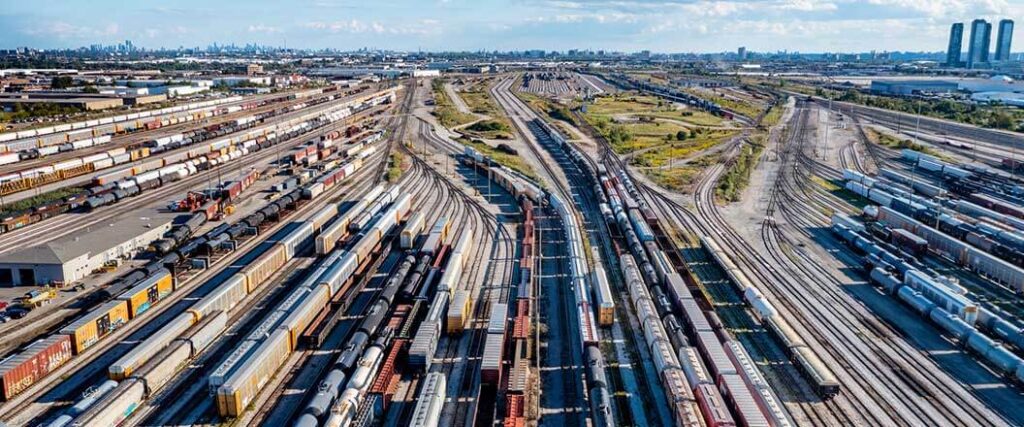What's the difference between transloading vs intermodal? Say you’ve got freight and need it moved — there are many different types of shipping methods to accomplish this goal, so it’s imperative to know and understand both options. But which is better for you?
In short, transloading sees freight unloaded from shipping containers onto another mode of transport in a different container. Intermodal has the freight never leaving its original container and the container itself is what’s moved between different modes of transportation.
Our guide below provides clear descriptions of what transloading and intermodal are. We also highlight their key differences so that you can understand how to incorporate both of them into your supply chain.

What is Transloading?
A true deep dive is a must to illustrate the difference between transloading and intermodal. So, let's start with what transloading is and why it’s used as a viable option in the transportation industry. Container transloading is the practice of freight starting in one shipping container and then being entirely unloaded into another shipping container to continue the shipping journey.
Transloading has many different examples and can be used within the same mode of transportation or across several. Some of the most common ways in which this occurs is:
- Rail to truck
- Rail to rail
- Ship to truck
- Truck to truck
- Ship to rail
- Ship to ship
Goods are also transloaded by air as well and are most commonly done from air to truck.
The actual act of transloading takes place at a dedicated transloading facility. This is a specialized place — often found alongside railroad tracks — that has the necessary personnel, equipment and strategic location in order to most efficiently carry out the process.
Most often, freight on a shipping container on a train is unloaded and then loaded into a truck. The truck then gets on a nearby highway to take the products to their final destination for retail or a warehouse to be stored until the time comes for them to hit the market.
What is Intermodal Shipping?
Now that a full rundown of transloading has been given, let’s look at exactly what intermodal transportation is and how it can be a good fit to meet your shipping goals. Intermodal refers to the movement of entire shipping containers from one mode of transportation to another.
An example would be a shipping container being unloaded off an ocean liner — without the internal contents themselves being touched at this juncture — and directly onto a flatbed truck or rail car. The shipping containers used are referred to as intermodal containers since their specific goal is to be transferable.
With the supply chain being stressed in the era of the COVID-19 pandemic, intermodal shipping is being utilized more often so that just one or two types of transportation aren’t being so heavily depended on.
2021 supply chain struggles include:
- Heavy port congestion
- Labor shortage (manufacturing, truck drivers, and more)
- Lack of material supply
- Border restrictions
Even before COVID, it was becoming increasingly likely that freight would not see just one method of movement. So, businesses and supply chain companies alike are trying to secure freight capacity. Utilizing intermodal shipping is one strategic way to get this done.

Transloading vs Intermodal: Which is Better?
With a clear understanding of both, the only thing left to figure out is which one better suits your needs. Let’s take a look at the strengths and weaknesses of both transloading and intermodal.
Pros of Transloading
Similar to intermodal, transloading offers a significant amount of flexibility and cost savings. When you can unload and load freight onto any type of vehicle, that can be a huge asset. It’s a bit more varied than intermodal, which needs transport that can accommodate large shipping containers. That can make it more difficult or impossible to use traditional 18-wheelers. In the same sense, transloading can also be used with cross docking.
A transloading facility can also be set up near highways and along train tracks to take advantage of the United States’ existing infrastructure. Besides transloading facilities, transload also can help at U.S. ports. When it’s difficult to even reach the port itself, transloading can occur at sea between two ships. The ship that’s now holding the freight can access smaller ports and speed up the process.
Cons of Transloading
There really is only one major potential drawback to using transloading services to move freight. The increased handling of goods increases the chances of damage or loss to your goods. While a supremely skilled transloading operation can mitigate this risk to an extent, the fact remains that the more time freight is touched, there’s increased risk of damage.
Even in the face of this, though, you can do something to protect your freight. Purchasing additional insurance to go beyond the bare minimum required by law for the logistics company to carry is a wise move for many companies. Of course, it will require a supplementary use of funds since you’ll pay for it. However, this additional cost is more than worth it if you’re having freight with high monetary value moved.
Pros of Intermodal
There are two huge benefits to having your freight shipped using intermodal transportation. The first one is that the freight doesn’t leave the container until you want it to. What that means is the freight in the container will remain undisturbed and unpacked until it reaches your distribution center, warehouse, or the customer’s retail space. As pointed out above, this should over time reduce the amount of potential damage your commodities are exposed to.
The second advantage comes from the added flexibility that comes from being able to have a boat, truck and train interchangeably haul your freight. When a crane can pluck your intermodal container off of a boat and put it directly onto a train, that’s an ideal scenario for your goods to keep moving. In this case, intermodal shipping containers really wouldn’t go on a plane, so that’s not a viable option.
Cons of Intermodal
Intermodal transportation relies heavily on being efficient or freight cost savings can’t be realized. Inefficiencies in the process can actually result in higher transportation costs than if a single mode of transport was used.
Also, if you want the absolute fastest type of shipping, neither transloading nor intermodal will fit that bill. While both can be used to great effect to get your freight where it needs to go, there is going to be added time when those containers are forced to stop and then be unloaded and loaded.

Booking Transloading and Intermodal with Transload Services USA
No matter your decision when it comes to transloading and intermodal, R+L Global Logistics is the company you want handling your freight — no matter how fragile or valuable it is. We know exactly how to best tackle the unique challenges presented by both of these methods of transportation and will give you the most cost-effective way to do so.
R+L Global Logistics has a presence at all U.S. ports to aid you in receiving your freight and routing it to where you need it to go. Furthermore, we have the employees, facilities, equipment and knowledge to expertly complete transload and intermodal shipping on your behalf. In addition, should you need to have your commodities stored for any length of time, our strategically placed warehouses around the U.S. can offer assistance in that area.
Our full suite of services includes:
So no matter what side you end up choosing in transloading vs intermodal, make sure your next freight load is in the hands of R+L Global Logistics — we’ll make sure to take care of it. Call us today at (352) 282-4588 and get started today.

